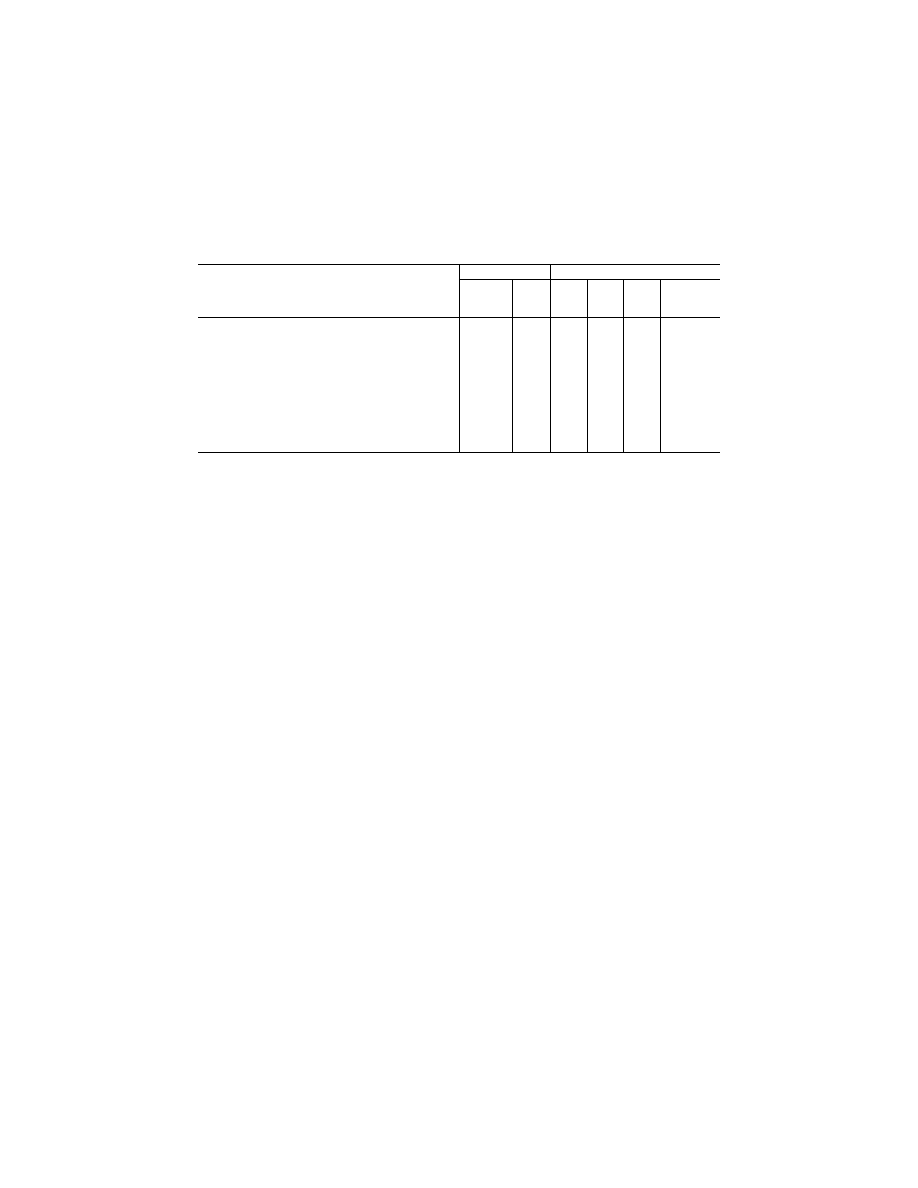
293
Federal Aviation Administration, DOT
Pt. 121, App. G
Maneuvers/Procedures
Required Permitted
Simulated
instrument
conditions
Inflight
Visual
simu-
lator
Non-
visual
simu-
lator
Training
device
Waiver
provisions of
§ 121.441(d)
VII. Emergency Procedures:
Each applicant must demonstrate the proper emergency proce-
dures for as many of the emergency situations listed below
as the person conducting the check finds are necessary to
determine that the person being checked has an adequate
knowledge of, and ability to perform, such procedure:
(a) Fire in flight .....................................................................
.................
...........
..........
B ..........
......................
(b) Smoke control .................................................................
.................
...........
..........
B ..........
......................
(c) Rapid decompression .....................................................
.................
...........
..........
B ..........
......................
(d) Emergency descent ........................................................
.................
...........
..........
B ..........
......................
(e) Any other emergency procedures outlined in the appro-
priate approved Airplane Flight Manual ...........................
.................
...........
..........
B ..........
......................
[Doc. No. 9509, 35 FR 99, Jan. 3, 1970, as amended by Amdt. 121–80, 36 FR 19362, Oct. 5, 1971;
Amdt. 121–91, 37 FR 10730, May 27, 1972; Amdt. 121–92, 37 FR 12717, June 28, 1972; Amdt. 121–
108, 38 FR 35448, Dec. 28, 1973; Amdt. 121–136, 42 FR 43389, Aug. 29, 1977; Amdt. 121–366, 78 FR
67844, Nov. 12, 2013; Docket FAA–2013–0485, Amdt. 121–376, 81 FR 90175, Dec. 13, 2016; Amdt. 121–
376B, 83 FR 1187, Jan. 10, 2018; 83 FR 4420, Jan. 31, 2018]
A
PPENDIX
G
TO
P
ART
121—D
OPPLER
R
ADAR
AND
I
NERTIAL
N
AVIGATION
S
YSTEM
(INS): R
EQUEST FOR
E
VAL
-
UATION
; E
QUIPMENT AND
E
QUIPMENT
I
NSTALLATION
; T
RAINING
P
ROGRAM
;
E
QUIPMENT
A
CCURACY
AND
R
ELI
-
ABILITY
; E
VALUATION
P
ROGRAM
1.
Application authority.
(a) An applicant for
authority to use a Doppler Radar or Inertial
Navigation System must submit a request
for evaluation of the system to the respon-
sible Flight Standards office charged with
the overall inspection of its operations 30
days prior to the start of evaluation flights.
(b) The application must contain:
(1) A summary of experience with the sys-
tem showing to the satisfaction of the Ad-
ministrator a history of the accuracy and re-
liability of the system proposed to be used.
(2) A training program curriculum for ini-
tial approval under § 121.405.
(3) A maintenance program for compliance
with subpart L of this part.
(4) A description of equipment installation.
(5) Proposed revisions to the Operations
Manual outlining all normal and emergency
procedures relative to use of the proposed
system, including detailed methods for con-
tinuing the navigational function with par-
tial or complete equipment failure, and
methods for determining the most accurate
system when an unusually large divergence
between systems occurs. For the purpose of
this appendix, a large divergence is a diver-
gence that results in a track that falls be-
yond clearance limits.
(6) Any proposed revisions to the minimum
equipment list with adequate justification
therefor.
(7) A list of operations to be conducted
using the system, containing an analysis of
each with respect to length, magnetic com-
pass reliability, availability of en route aids,
and adequacy of gateway and terminal radio
facilities to support the system. For the pur-
pose of this appendix, a gateway is a specific
navigational fix where use of long range
navigation commences or terminates.
2.
Equipment and equipment installation—In-
ertial Navigation Systems
(
INS
)
or Doppler
Radar System.
(a) Inertial Navigation and
Doppler Radar Systems must be installed in
accordance with applicable airworthiness re-
quirements.
(b) Cockpit arrangement must be visible
and useable by either pilot seated at his duty
station.
(c) The equipment must provide, by visual,
mechanical, or electrical output signals, in-
dications of the invalidity of output data
upon the occurrence of probable failures or
malfunctions within the system.
(d) A probable failure or malfunction with-
in the system must not result in loss of the
aircraft’s required navigation capability.
(e) The alignment, updating, and naviga-
tion computer functions of the system must
not be invalidated by normal aircraft power
interruptions and transients.
(f) The system must not be the source of
cause of objectionable radio frequency inter-
ference, and must not be adversely affected
by radio frequency interference from other
aircraft systems.
(g) The FAA-approved airplane flight man-
ual, or supplement thereto, must include
pertinent material as required to define the
normal and emergency operating procedures
and applicable operating limitations associ-
ated with INS and Doppler performance
(such as maximum latitude at which ground
alignment capability is provided, or devi-
ations between systems).
VerDate Sep<11>2014
08:20 May 17, 2019
Jkt 247048
PO 00000
Frm 00303
Fmt 8010
Sfmt 8002
Y:\SGML\247048.XXX
247048